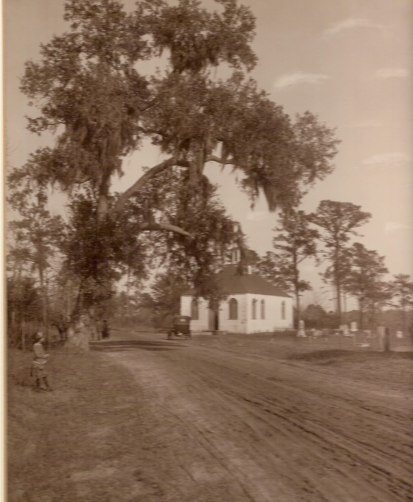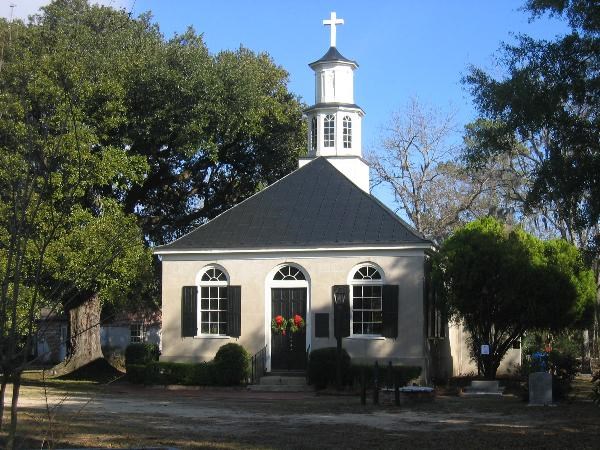THE LOFTON FAMILY
We visit the Lofton family obelisk on our French Santee Tour.
See the video version of this story on "I Love the Lowcountry."
The next time you visit Christ Church in Mt. Pleasant, you may want to pause a moment to recall the tragic demise of the Lofton family. A memorial obelisk surrounded by a short rusty fence just in front and south of the old church's entrance marks their passage - mother, father, and two young sons, all of whom died within days of each other in September 1857 from yellow fever - reminding us that deadly epidemics have always been a part of Charleston's history, well before 2020's COVID-19 onset.
Samuel H. Lofton and Susan Ann Lowry were married here at Christ Church in 1839. They eventually came to own about 3,000 acres within both the Christ Church and St. James Santee parishes on which they raised cattle.
According to author and Lofton descendent Dr. Walter Bonner in Home in the Village, the couple sold their land in the country and with their three sons and one daughter moved to Mt. Pleasant around 1850 so that the children could attend Mt. Pleasant Academy. A second daughter, Jenny Lulu, joined the family on Dec. 31, 1851, followed by two more boys, Robert G. Lofton in 1853 and George E. Lofton in 1855. The Loftons owned two enslaved domestics, a man and a woman. Samuel Lofton continued to support his family by delivering beef to ships anchored in Charleston Harbor.
Around the third week of September 1857, the two youngest Lofton boys, Robert and George, developed symptons consistent with yellow fever and died within days. Their mother, Susan Ann, passed away on Sept. 18. By this time, others in the community were beginning to exhibit symptons consistent with yellow fever and the local physician sent word to the Medical College of South Carolina in Charleston to send help.
Dr. Robert Armstrong Kinloch responded to the call and visited Samuel Lofton on Sept. 20. Lofton died within hours of Dr. Kinloch's arrival. With infection spreading rapidly, residents of the small community began fleeing the village, but not before 23 of the 58 neighbors who caught the disease died.
The couple's oldest son, Henry Michael, 17, was safely away in Columbia attending The Arsenal military academy when the fever struck his family. The remaining Lofton sons, John Marion (12) and Samuel Joseph (8), as well as the younger daughter, Jenny (6) developed symptons of the disease but recovered. Both of the enslaved domestics caught the fever; the woman survived, but the man died. The Lofton's older daughter, Mary Ann (10), escaped without ever exhibiting symptons.
The five living Lofton children were now orphaned. Henry Michael was old enough to establish himself independently as an adult. He returned to the Lowcountry and became an overseer on three Cooper River plantations - Rice Hope, Bene Vente, and Mepkin. Somewhat ironically, a brush years later with malaria on those plantations led Henry Michael to leave the plantation life and establish himself as a retail businessman after the Civil War.
The four remaining Lofton children were reared by other families. John Marion went to the H.S. Tew family who had lost a child themselves during the epidemic. Four years later, John Mason, at 16, joined the Confederate Army. Mary Ann was raised locally by the Ferguson family and Samuel Joseph moved in with his aunt, Jane Haseldon. Jenny was the only sibling to be adopted outside Christ Church parish, moving in with Joel and Mary Ann Butler of the Orangeburg District in the central part of the state.
One of Charleston's leading medical researchers of his day, Dr. William Hume, believed that on one of his trips to deliver meat to a vessel, Mr. Lofton crossed paths with an infectious seaman, and thus brought the infection back into the village. This contention support Dr. Hume's claim that ships should be strictly quarantined upon arrival in Charleston's port, a recommendation that local merchants found discomforting from an economic perspective.
This belief was strongly contested by Dr. Robert Alexander Kinlock, Mr. Lofton's attending physician, who felt the disease was environmentally based there in the town. He recommended the city clean up any waste piles or areas that included decaying animal or vegetative matter.
In January 1858, Dr. Kinloch published his account of the fever's spread in the Charleston Medical Journal and Review. Over the next few years, Dr. Kinlock and Dr. Hume would write paper after paper disputing each other's claims as to what caused yellow fever. In the end, they somewhat amiably agreed to disagreed.
It would still be decades before, in 1881, mosquitos would be identified as the true agent for the spread of yellow by a team of doctors including Dr. Walter J. Finley in Cuba and Dr. Walter Reed in America. In this sense, both Dr. Kinloch and Dr. Hume were both right and wrong: mosquitos picked up the tainted blood from sailors, then returned to land where they bred in still waters before biting, and infecting, their human victims.
In 1900, the living Lofton siblings established the Christ Church memorial to remember their parents and brothers. In stone softened by time, the words read:
In Memory
of our Father
Samuel H.
Mother Susan Ann
and brothers
Robert G.
and George E.
All died the
Same week
In 1858
God gave,
He took,
He will restore
LOFTON
Unfortunately, they got the date of death wrong by a year.



SOURCES AND MORE INFORMATION
Bonner, Walter. "Home in the Village: McClellanville in Old St. James Santee Parish," 2012. Mt. Pleasant, S.C.: Corinthian Books.
